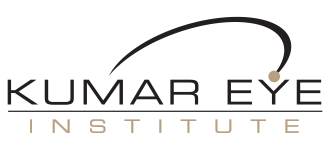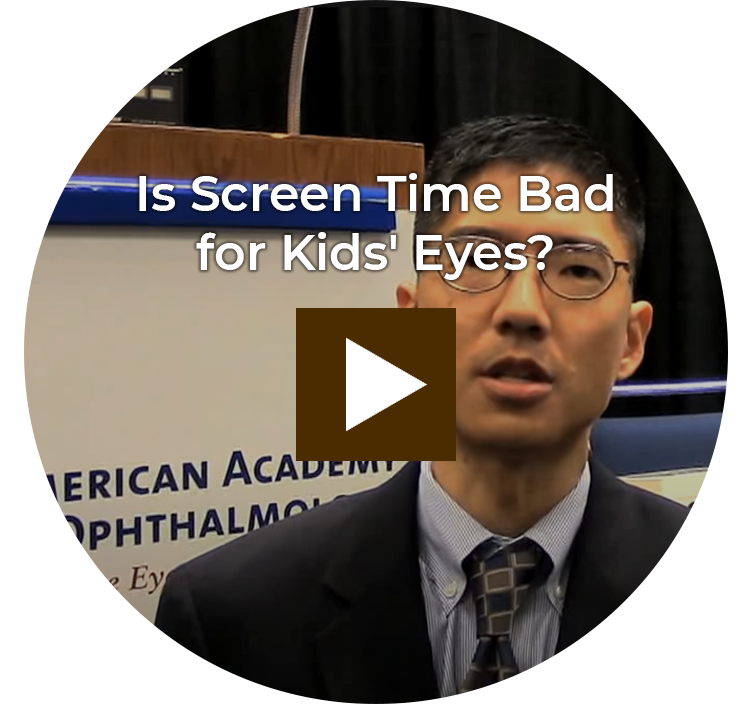Computerized Optic Disc Imaging and Nerve Fiber Layer Analysis (GDX, HRT, OCT)
Computerized analysis of the optic nerve and nerve fiber layer is used to evaluate the structure of the optic nerve surface and the surrounding retinal nerve fiber layer in patients who have glaucoma. These tests provide measurements of the optic nerve/nerve fiber layer that help the physician determine whether there has been structural damage due to glaucoma. The tests are painless and require a few minutes.
Corneal Topography
Corneal Topography maps and measures the shape of the cornea, the clear front part of the eye. This painless test is used commonly to evaluate keratoconus and to map the cornea before and/or after refractive surgery. The test can be used to fit contact lenses.
The technician asks the patient to look straight ahead at a light with concentric rings. The patient keeps his/her eye open for about five seconds while the technician positions the instrument to take a photograph of the cornea. The test takes approximately one minute per eye. More than one picture may be taken per eye.
Electro-Diagnostic Testing
Electroretinography (ERG), electro-oculography (EOG) and visual evoked potentials or visual evoked response (VEP or VER). Electro-diagnostic testing provides additional information about the function of the retina and optic nerve pathways to the brain. Electrical responses from the eye or brain are recorded when a light or pattern stimulus is presented.
Fluorescein Angiography
Fluorescein angiography is a photographic procedure. A teaspoonful of fluorescein dye is injected into a vein in the arm, and pictures are taken every few seconds as the dye travels through the blood vessels in the back of the eye. Photographs using fluorescein dye highlight abnormal blood vessels and identify fluid leaks in the retina, as well as overall vigor of the retinal circulation.
Ocular Coherence Tomography (OCT)
Ocular coherence tomography is a procedure that uses a computer to evaluate the interference patterns of light reflected from the interior of the eye. The resulting image is similar to a cross section of retinal tissue as seen through a microscope. Until recently, this type of image was not possible in a living eye. OCT gives the ophthalmologist a clear view of the layers of the retina and aids in the diagnosis of retinal conditions associated with fluid leakage including macular edema and macular degeneration.
OCT is similar to undergoing an eye examination. The OCT instrument produces a low-intensity light that is directed towards the patient’s eye. The procedure is painless and usually takes just a few minutes.
Photography of the Eye (including retinal photography and fundus photography)
Photography of the eye is one of the ophthalmologist?s most valuable tools. It is painless and quick. Photographs of the back of the eye (retina or fundus) are used to diagnose and document progression and treatment of eye conditions such as macular degeneration, diabetic retinopathy, optic nerve diseases and other conditions involving the retina. An Ophthalmic Photographer, specially trained to photograph the eye, takes the pictures. Photography of the back of the eye takes a few minutes. The patient?s eyes are dilated, the patient is seated close to the camera with eyes open, and the photos are taken with film or digital cameras. The patient may experience a little annoyance from the bright flashes.
Photography of the external parts of the eye and/or face is performed to document certain conditions or to document changes before and after treatment or surgery.
Visual Field Tests (Goldmann, Humphrey, FDT, Octopus)
The visual field is the area that a person can see at any one time. The visual field test, also know as perimetry, determines the borders of that field are and how well a person’s eyes see in different areas of the field. It tests the function of the retina, optic nerve and visual pathways to the brain.
The Humphrey Visual Field (HVF) and Goldmann Visual Field (GVF) are two different instruments that measure a two-dimensional map of a patient’s entire area of vision. The HVF is an automated visual field. The computer flashes lights on and off and the patient presses a button each time he/she sees a light. The GVF is a manual visual field. The technician moves the light from the non-seeing outer edge into the patient?s view. The technician then maps the visual field based on the patient?s responses.
During the test, the patient is in the dark with his/her head positioned facing into the bowl. The technician instructs the patient to stare straight ahead at a target and to press the buzzer each time he/she sees a light. The test is performed on each eye separately. It takes approximately 10 to 30 minutes per eye and the patient must be alert during the test.
Ultrasound of the Eye (Biometry/IOL calculation, A-Scan, B-Scan)
Ultrasound of the eye uses high frequency sound waves to detect and diagnose disorders in and behind the eye. Ultrasound of the eye is used when the doctor does not have a good view into the eye or behind the eye or needs to evaluate a specific lesion. Ultrasound of the eye is painless, requires about 15 minutes, and can provide detailed information.
All patients undergoing cataract surgery must have ultrasound of the eye to be operated to determine the power of the artificial lens. Usually, the other eye is evaluated at the same time. This test is painless and takes approximately 15 minutes. Ideally, the patient should have the test performed at least one week before surgery.
Call Today for an Appointment
502-368-3937








